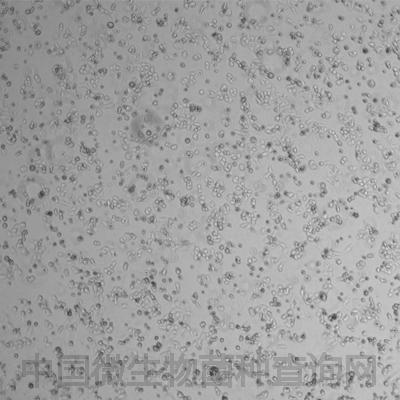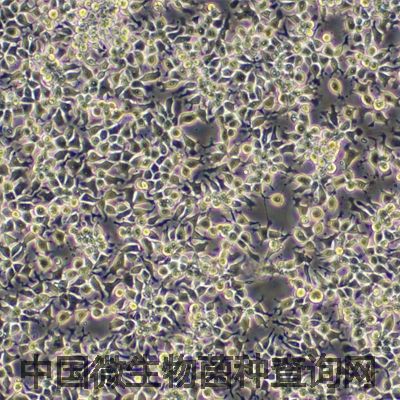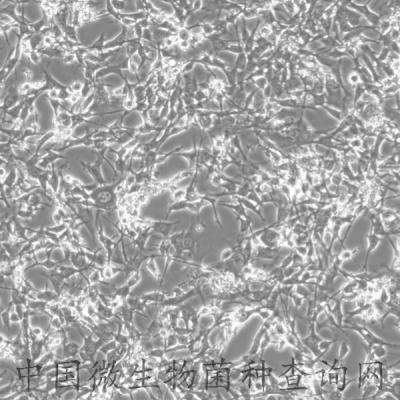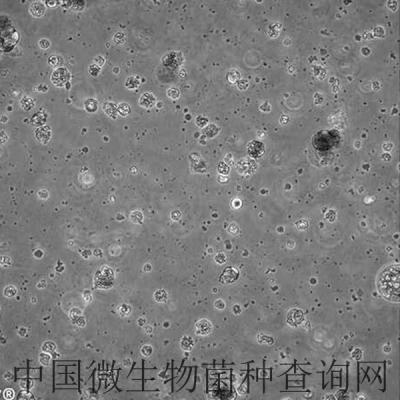
細(xì)胞類型:其他細(xì)胞類型
品系:Fischer 344 (F344)
是否是腫瘤細(xì)胞:0
物種來(lái)源:褐鼠
器官來(lái)源:肺
數(shù)量:大量
ATCC Number:CRL-2300?
年限:56 day old
運(yùn)輸方式:凍存運(yùn)輸
細(xì)胞形態(tài):上皮樣
生長(zhǎng)狀態(tài):貼壁生長(zhǎng)
規(guī)格:1mg Designations: RLE-6TN
Depositors: ?KE Driscoll
Biosafety Level:2 [Cells contain Papovavirus ]
Shipped: frozen
Medium & Serum: See Propagation Growth Properties:adherent
Organism: Rattus norvegicus
Morphology:epithelial
Source: Organ: lung
Strain: Fischer 344 (F344)
Cell Type: alveolar type II; SV40 transfected
Cellular Products:cytokeratin 8 and 19
Permits/Forms:In addition to the MTA mentioned above, other ATCC and/or regulatory permits may be required for the transfer of this ATCC material. Anyone purchasing ATCC material is ultimately responsible for obtaining the permits. Please click here for information regarding the specific requirements for shipment to your location.
Tumorigenic:No
Cytogenetic Analysis:Cells are reported to remain near diploid and karyotypically stable from passage 19-70 with 50% or more of the cells containing 42 chromosomes. At passage 37, there was a translocation between chromosome 1 and 15 which results in trisomy of the q arm of chromosome 1.
Age: 56 day old
Gender: male
Comments:The RLE-6TN (rat lung epithelial-T-antigen negative) cell line was derived from alveolar Type II cells isolated from a 56 day old male F344 rat using airway perfusion with a pronase solution.
At passage 5, the alveolar Type II cells were transfected with SV40 (pRSV-T DNA) by lipofection.
However, expression of the SV40-T antigen was negative by nuclear immunostaining and by PCR, indicating these cells were derived by a spontaneous immortalization.
The cell line exhibits characteristics of alveolar Type II cells such as lipid-containing inclusion bodies (phosphine 3R staining and electron microscopy) and expression of cytokeratin 8 and 19; the cells do not express alkaline phosphatase activity.
Expression of several chemotactic cytokines by RLE-6TN cells was reported to be similar to that of primary cultures of alveolar Type II cells.
Although these cells appear negative for the SV40 antigen, they should be handled as potentially biohazardous material under at least Biosafety Level 2 containment.
Propagation: ATCC complete growth medium: Ham's F12 medium with 2 mM L-glutamine supplemented with 0.01 mg/ml bovine pituitary extract, 0.005 mg/ml insulin, 2.5 ng/ml insulin-like growth factor, 0.00125 mg/ml transferrin, and 2.5 ng/ml EGF, 90%; fetal bovine serum, 10%
Temperature: 37.0°C
Subculturing: Protocol:
- Remove and discard culture medium.
- Briefly rinse the cell layer with 0.25% (w/v) Trypsin- 0.53 mM EDTA solution to remove all traces of serum that contains trypsin inhibitor.
- Add 2.0 to 3.0 ml of Trypsin-EDTA solution to flask and observe cells under an inverted microscope until cell layer is dispersed (usually within 5 to 15 minutes).
Note: To avoid clumping do not agitate the cells by hitting or shaking the flask while waiting for the cells to detach. Cells that are difficult to detach may be placed at 37?C to facilitate dispersal. - Add 6.0 to 8.0 ml of complete growth medium and aspirate cells by gently pipetting.
- Add appropriate aliquots of the cell suspension to new culture vessels.
- Incubate cultures at 37?C.
.
Subcultivation Ratio: A subcultivation ratio of 1:5 is recommended
Medium Renewal: Every 2 to 3 days
Preservation: Freeze medium: Complete growth medium supplemented with 5% (v/v) DMSO
Storage temperature: liquid nitrogen vapor phase
References: 39772: Driscoll KE, et al. Establishment of immortalized alveolar type II epithelial cell lines from adult rats. In Vitro Cell. Dev. Biol. Anim. 31: 516-527, 1995. PubMed: 8528500
39773: Driscoll KE, et al. Alpha-quartz-induced chemokine expression by rat lung epithelial cells: effects of in vivo and in vitro particle exposure. Am. J. Pathol. 149: 1627-1637, 1996. PubMed: 8909252





